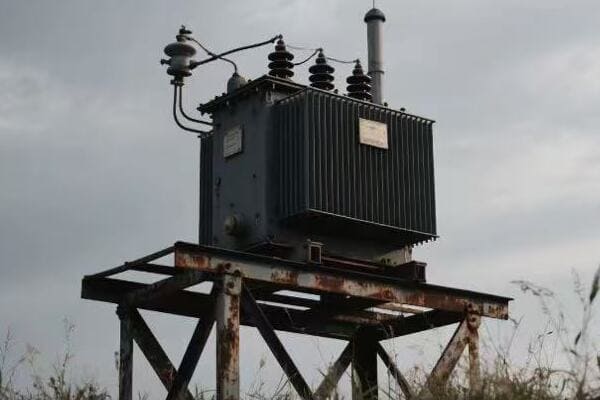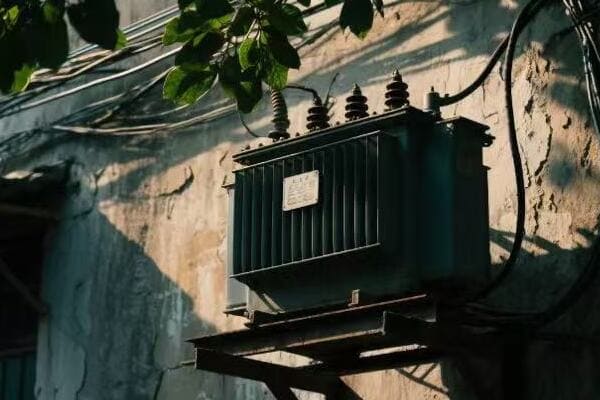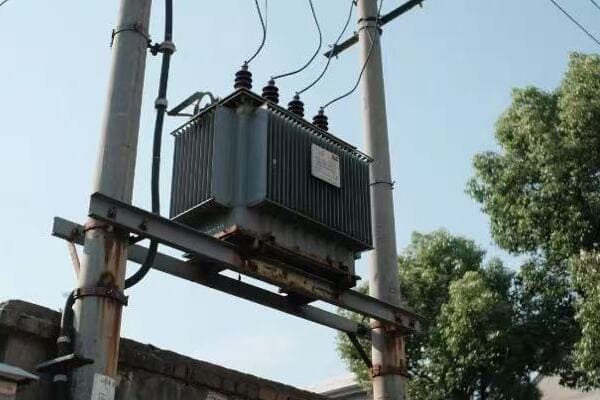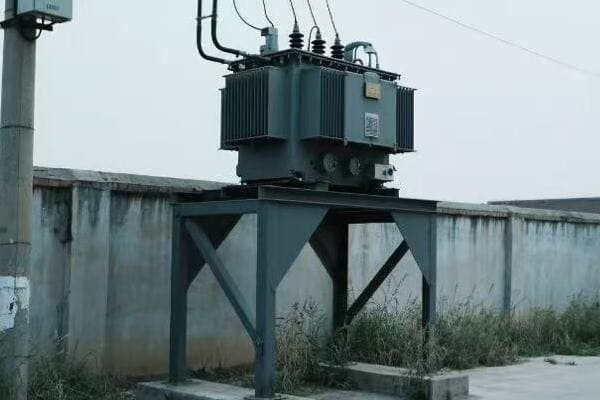Distribution Transformer Suppliers: Powering Smart Grid Evolution with Cutting-Edge Energy Solutions?
Are you ready for the power revolution? Distribution transformer suppliers are at the forefront, reshaping how we receive and use electricity in our homes and businesses.
Distribution transformer suppliers are driving smart grid evolution through innovative technologies and cutting-edge energy solutions. They are developing transformers that are more efficient, intelligent, and adaptable to the changing needs of modern power distribution systems.

As someone who has worked in the power industry for years, I’ve seen firsthand how these innovations are changing the game. Let’s explore how distribution transformer suppliers are powering the future of our electrical grids.
Smart Grid Pioneers: Transforming Power Distribution with Innovative Technologies?
The term "smart grid" is more than just a buzzword. It’s a reality that distribution transformer suppliers are bringing to life through innovative technologies.
Distribution transformer suppliers are pioneering smart grid technologies by integrating advanced sensors, communication systems, and data analytics into their products. These smart transformers enable real-time monitoring, automated decision-making, and improved grid reliability.

Let’s dive into the key innovations that are transforming power distribution:
Advanced Sensors and Monitoring
Modern transformers are equipped with sophisticated sensors:
- They monitor voltage, current, and temperature in real-time
- These sensors detect potential issues before they become problems
- The data helps utilities optimize grid performance
Communication Systems
Smart transformers are part of a connected network:
- They use protocols like IEC 61850 for standardized communication
- This allows for seamless integration with other grid components
- Utilities can remotely monitor and control transformer operations
Data Analytics and AI
The power of data is revolutionizing grid management:
- AI algorithms analyze sensor data to predict maintenance needs
- Machine learning optimizes load balancing and power flow
- These insights lead to more efficient and reliable power distribution
Self-Healing Capabilities
Smart transformers can respond to grid issues automatically:
- They can isolate faults to prevent widespread outages
- Some can reroute power around problem areas
- This self-healing ability improves overall grid resilience
Adaptive Voltage Regulation
Transformers now actively manage voltage levels:
- They can adjust output voltage based on real-time demand
- This helps integrate variable renewable energy sources
- It also improves power quality for end-users
| Innovation | Benefit | Impact on Grid |
|---|---|---|
| Advanced Sensors | Early problem detection | Reduced downtime |
| Communication Systems | Remote monitoring and control | Improved responsiveness |
| Data Analytics | Predictive maintenance | Optimized performance |
| Self-Healing | Automatic fault isolation | Enhanced reliability |
| Adaptive Voltage Regulation | Improved power quality | Better renewable integration |
I remember a project where we installed these smart transformers in a city prone to severe weather. During a major storm, the self-healing capabilities kicked in, isolating damaged sections and rerouting power. What could have been a citywide blackout was reduced to minor, localized outages. The utility company was amazed at how quickly they could assess and respond to the situation.
Another time, I worked with a rural electric cooperative to implement smart transformers with advanced voltage regulation. They were struggling with integrating solar farms into their grid. The new transformers’ ability to adapt to fluctuating inputs solved their voltage stability issues and allowed for greater renewable energy adoption.
These experiences showed me that smart transformer technologies are not just incremental improvements. They’re fundamentally changing how we manage and distribute power, making our grids more resilient, efficient, and ready for the challenges of the future.
Next-Gen Efficiency: Advanced Features Revolutionizing Distribution Transformer Performance?
Efficiency is the name of the game in modern power distribution. Distribution transformer suppliers are pushing the boundaries of what’s possible, creating transformers that are more efficient than ever before.
Advanced features in modern distribution transformers are revolutionizing performance by minimizing energy losses, improving thermal management, and optimizing load handling. These next-gen efficiencies translate to significant energy savings and improved grid performance.

Let’s explore the advanced features that are setting new standards in transformer efficiency:
Amorphous Metal Cores
A game-changer in reducing core losses:
- Amorphous metals have a random atomic structure
- This reduces magnetic hysteresis losses significantly
- Core losses can be cut by up to 70% compared to traditional silicon steel
Advanced Winding Techniques
Innovative winding designs minimize copper losses:
- Foil windings reduce eddy current losses
- Interleaved windings improve coupling and reduce stray losses
- These techniques can reduce load losses by up to 20%
Improved Insulation Materials
Better insulation means better efficiency:
- New materials like Nomex offer superior thermal performance
- They allow for higher operating temperatures without degradation
- This enables transformers to handle higher loads more efficiently
Optimized Cooling Systems
Keeping transformers cool improves their efficiency:
- Advanced oil flow designs enhance heat dissipation
- Some use natural ester fluids for better cooling and environmental safety
- Efficient cooling allows for more compact designs without sacrificing performance
Smart Load Management
Intelligent features for optimal performance:
- Dynamic load balancing adjusts to real-time demand
- Predictive algorithms optimize transformer loading
- This ensures the transformer operates at peak efficiency under varying conditions
| Feature | Efficiency Gain | Long-term Benefit |
|---|---|---|
| Amorphous Metal Cores | Up to 70% less core loss | Significant energy savings |
| Advanced Windings | Up to 20% less load loss | Reduced operating costs |
| Improved Insulation | Higher temperature tolerance | Increased lifespan and capacity |
| Optimized Cooling | Better heat dissipation | More compact, efficient designs |
| Smart Load Management | Optimized performance | Adaptability to varying demands |
I’ve seen the impact of these efficiency improvements firsthand. In one project, we replaced an old transformer with a new amorphous core model in a large commercial building. The energy savings were so significant that the transformer paid for itself in just three years. The building owner was thrilled with the reduced electricity bills and the positive environmental impact.
Another memorable experience was working with a utility company to upgrade their grid with smart load management transformers. They were able to reduce peak load demands by intelligently distributing power, which not only improved efficiency but also delayed the need for costly infrastructure upgrades.
These advancements in efficiency are not just technical achievements; they have real-world impacts on energy consumption, costs, and environmental sustainability. As distribution transformer suppliers continue to innovate, we’re moving closer to a future where energy loss in power distribution is minimized, and our electrical grids operate at peak efficiency.
Renewable Integration: Adapting Transformers for a Sustainable Energy Future?
The rise of renewable energy sources is changing the landscape of power distribution. Distribution transformer suppliers are at the forefront of this green revolution, adapting their products to meet the unique challenges of renewable integration.
Distribution transformers are being adapted for renewable energy integration through features like bi-directional power flow capabilities, enhanced voltage regulation, and smart grid compatibility. These adaptations are crucial for managing the variable nature of renewable sources and ensuring grid stability.

Let’s explore how transformers are evolving to support a sustainable energy future:
Bi-Directional Power Flow
Enabling energy to flow both ways:
- Transformers can now handle power from grid-connected solar and wind
- They manage fluctuations in energy production and consumption
- This allows for efficient integration of distributed energy resources
Enhanced Voltage Regulation
Dealing with voltage variations from renewables:
- Advanced on-load tap changers adjust voltage levels in real-time
- This maintains stable voltage despite fluctuating inputs from renewables
- It ensures power quality for consumers even with high renewable penetration
Harmonic Mitigation
Addressing power quality issues:
- Renewable sources often introduce harmonics into the grid
- Modern transformers use special winding designs to suppress harmonics
- This maintains power quality and protects sensitive equipment
Energy Storage Integration
Supporting the use of batteries in the grid:
- Some transformers are designed to work with grid-scale energy storage
- They manage charging and discharging of batteries
- This helps balance supply and demand, especially with intermittent renewables
Smart Grid Compatibility
Enabling intelligent renewable management:
- Transformers with communication capabilities integrate with smart grids
- They provide real-time data on renewable energy production and grid status
- This allows for optimal dispatch and control of renewable resources
| Adaptation | Benefit | Impact on Renewable Integration |
|---|---|---|
| Bi-Directional Flow | Handles distributed generation | Enables prosumer model |
| Enhanced Voltage Regulation | Maintains stable voltage | Increases renewable hosting capacity |
| Harmonic Mitigation | Improves power quality | Protects grid from renewable-induced issues |
| Energy Storage Integration | Balances supply and demand | Enhances renewable reliability |
| Smart Grid Compatibility | Enables intelligent control | Optimizes renewable resource use |
I recall a project where we installed these renewable-ready transformers in a neighborhood with high solar panel adoption. The bi-directional flow capability allowed excess solar energy to be fed back into the grid smoothly. The utility was able to increase the allowed solar capacity in the area by 50% without compromising grid stability.
Another interesting case was a wind farm integration project. The variable output of wind turbines was causing voltage fluctuations. We implemented transformers with advanced voltage regulation, which solved the issue and allowed the wind farm to operate at full capacity without affecting nearby consumers.
These experiences have shown me that adapting transformers for renewable integration is not just about handling green energy – it’s about creating a flexible, resilient grid that can accommodate the changing energy landscape. As we move towards a more sustainable future, these adapted transformers will play a crucial role in making renewable energy a reliable and integral part of our power systems.
Cybersecure Power: Safeguarding Smart Grids with Intelligent Transformer Design?
As our power grids become smarter, they also become more vulnerable to cyber threats. Distribution transformer suppliers are rising to this challenge by incorporating cybersecurity features into their designs.
Intelligent transformer designs are enhancing smart grid cybersecurity through encrypted communications, secure access controls, and intrusion detection systems. These features protect critical infrastructure from cyber attacks, ensuring the reliability and integrity of our power distribution systems.

Let’s dive into how intelligent transformer designs are safeguarding our smart grids:
Encrypted Communications
Protecting data transmission:
- Transformers use strong encryption protocols for all communications
- This prevents eavesdropping and data tampering
- Secure channels ensure that control commands are authentic and untampered
Secure Access Controls
Limiting who can interact with the transformer:
- Multi-factor authentication for remote access
- Role-based access control limits actions based on user privileges
- This prevents unauthorized changes to transformer settings
Intrusion Detection Systems
Actively monitoring for threats:
- Embedded systems detect unusual patterns or unauthorized access attempts
- They can alert operators to potential security breaches
- Some systems can automatically isolate the transformer to prevent further compromise
Firmware Security
Ensuring the integrity of transformer software:
- Secure boot processes verify firmware authenticity
- Regular, secure firmware updates patch vulnerabilities
- This protects against malware and unauthorized modifications
Physical Security Integration
Combining cyber and physical security:
- Sensors detect physical tampering attempts
- Integration with substation security systems for comprehensive protection
- This creates a holistic security approach for the entire grid infrastructure
| Security Feature | Protection Provided | Benefit to Grid |
|---|---|---|
| Encrypted Communications | Data integrity and confidentiality | Secure remote operations |
| Secure Access Controls | Prevention of unauthorized access | Reduced risk of malicious actions |
| Intrusion Detection | Early warning of cyber attacks | Rapid response to threats |
| Firmware Security | Protection against malware | Maintained transformer integrity |
| Physical Security Integration | Comprehensive threat detection | Holistic infrastructure protection |
I remember a project where we implemented these cybersecure transformers in a critical urban substation. During a simulated cyber attack exercise, the transformers’ intrusion detection systems identified and blocked multiple attack vectors that would have compromised older models. The utility’s cybersecurity team was impressed by the transformers’ ability to serve as an active defense layer.
Another eye-opening experience was when we upgraded a rural electric cooperative’s grid with these intelligent transformers. They had previously been victims of a ransomware attack that affected their SCADA systems. The new transformers’ secure firmware and encrypted communications provided an additional layer of protection, giving them confidence in their grid’s resilience against future cyber threats.
These experiences have shown me that cybersecurity in transformer design is not just an add-on feature – it’s a fundamental requirement for modern smart grids. As our power systems become more interconnected and digitalized, these intelligent, secure transformers will be on the front lines, protecting our critical infrastructure from ever-evolving cyber threats.
Longevity and Reliability: Innovations Extending the Life of Modern Distribution Transformers?
In the world of power distribution, longevity and reliability are king. Distribution transformer suppliers are pushing the boundaries of durability, creating transformers that last longer and perform more reliably than ever before.
Innovations in materials, design, and maintenance techniques are significantly extending the life of modern distribution transformers. These advancements not only improve reliability but also reduce lifecycle costs and environmental impact, making transformers more sustainable and economical in the long run.

Let’s explore the key innovations that are making transformers more durable and reliable:
Advanced Insulation Materials
Extending transformer life from the inside out:
- New synthetic ester fluids offer superior insulation properties
- These fluids can extend transformer life by up to 20%
- They also have higher flash points, improving safety and reducing fire risks
Predictive Maintenance Technologies
Catching issues before they become problems:
- AI-powered analytics predict potential failures
- Continuous monitoring allows for timely interventions
- This proactive approach significantly reduces unexpected breakdowns
Improved Cooling Systems
Keeping transformers running cooler for longer:
- Advanced cooling fin designs enhance heat dissipation
- Some models use phase-change materials for efficient cooling
- Better cooling means less thermal stress and longer component life
Corrosion-Resistant Materials
Protecting transformers from environmental damage:
- Use of galvanized steel and special coatings for tank construction
- Stainless steel radiators in corrosive environments
- These materials extend transformer life in harsh conditions
Load Management Systems
Optimizing performance to extend lifespan:
- Smart load balancing prevents overloading
- Dynamic rating systems maximize capacity without compromising longevity
- This ensures transformers operate within optimal parameters
| Innovation | Lifespan Benefit | Reliability Improvement |
|---|---|---|
| Advanced Insulation | Up to 20% longer life | Reduced insulation breakdown |
| Predictive Maintenance | Fewer unexpected failures | Increased uptime |
| Improved Cooling | Less thermal degradation | Consistent performance |
| Corrosion Resistance | Extended life in harsh environments | Reduced environmental damage |
| Load Management | Optimal operating conditions | Prevented overload failures |
I recall a project where we installed these long-life transformers in a coastal industrial area. The corrosive sea air had been a constant problem for their older units. After five years, the new transformers showed minimal signs of wear, whereas the old ones would have needed replacement by then. The facility manager was thrilled with the reduced maintenance costs and improved reliability.
Another memorable experience was implementing predictive maintenance systems for a large urban utility. Within the first year, the system predicted and prevented three potential failures that would have caused major outages. The utility estimated that this saved them millions in potential downtime and repair costs.
These innovations in longevity and reliability are not just technical achievements; they have real-world impacts on grid stability, operational costs, and environmental sustainability. As distribution transformer suppliers continue to push the boundaries of durability, we’re moving towards a future where power infrastructure is more resilient, cost-effective, and environmentally friendly.
Conclusion
Distribution transformer suppliers are driving smart grid evolution through innovative technologies, enhanced efficiency, renewable integration, cybersecurity, and improved longevity. These advancements are crucial for creating a more reliable, efficient, and sustainable power infrastructure for the future.
Free CHBEB Transformer Catalog Download
Get the full range of CHBEB transformers in one catalog.
Includes oil-immersed, dry-type, pad-mounted, and custom solutions.
Quick Message
Request A free quote
We'd like to work with you
- +86 15558785111
- [email protected]
- +86 15558785111
What We Do
CHINA BEI ER BIAN (CHBEB) GROUP, with 218 million in registered capital, originated from Beijing Beierbian Transformer Group. Headquartered in Beijing for R&D, it operates major production bases in Nanjing and Yueqing, producing high-quality products.
Latest Product
address
BeiJing
No 3,RongJing East Road,BeiJing Economic Technological Development Area,BeiJing,China
JiangSu
No 7️Xiangfeng Road,Jiangning,NanJing,JiangSu,China
WenZhou
No.211, Wei 16 Road, Industrial Zone, Yueqing, Wenzhou, Zhejiang, China.
XiangYang Industrial Zone ,YueQing,WenZhou,ZheJiang,China
contact us
- [email protected]
- +86 13057780111
- +86 13057780111
- +86 15558785111
Copyright © Bei Er Bian Group


